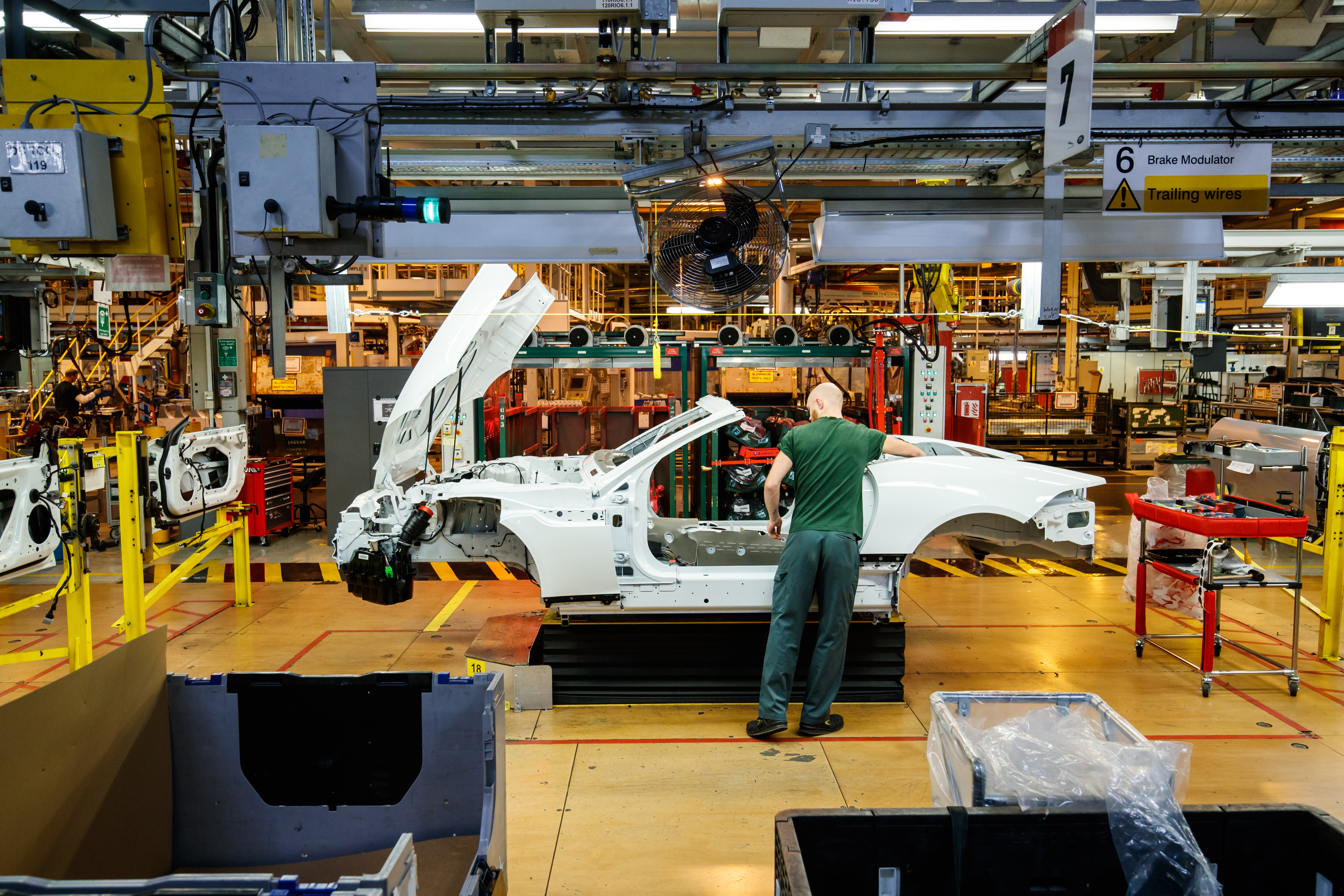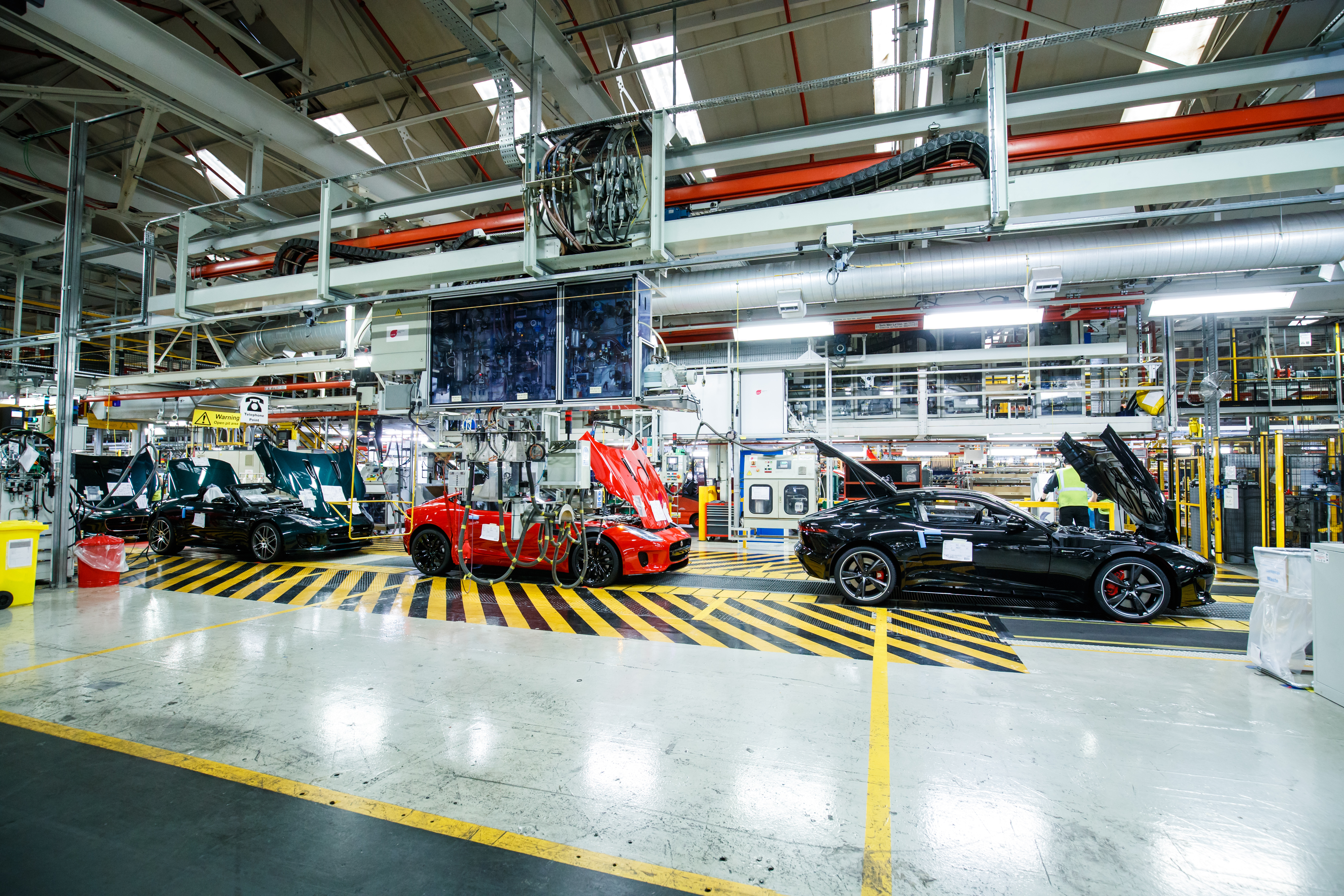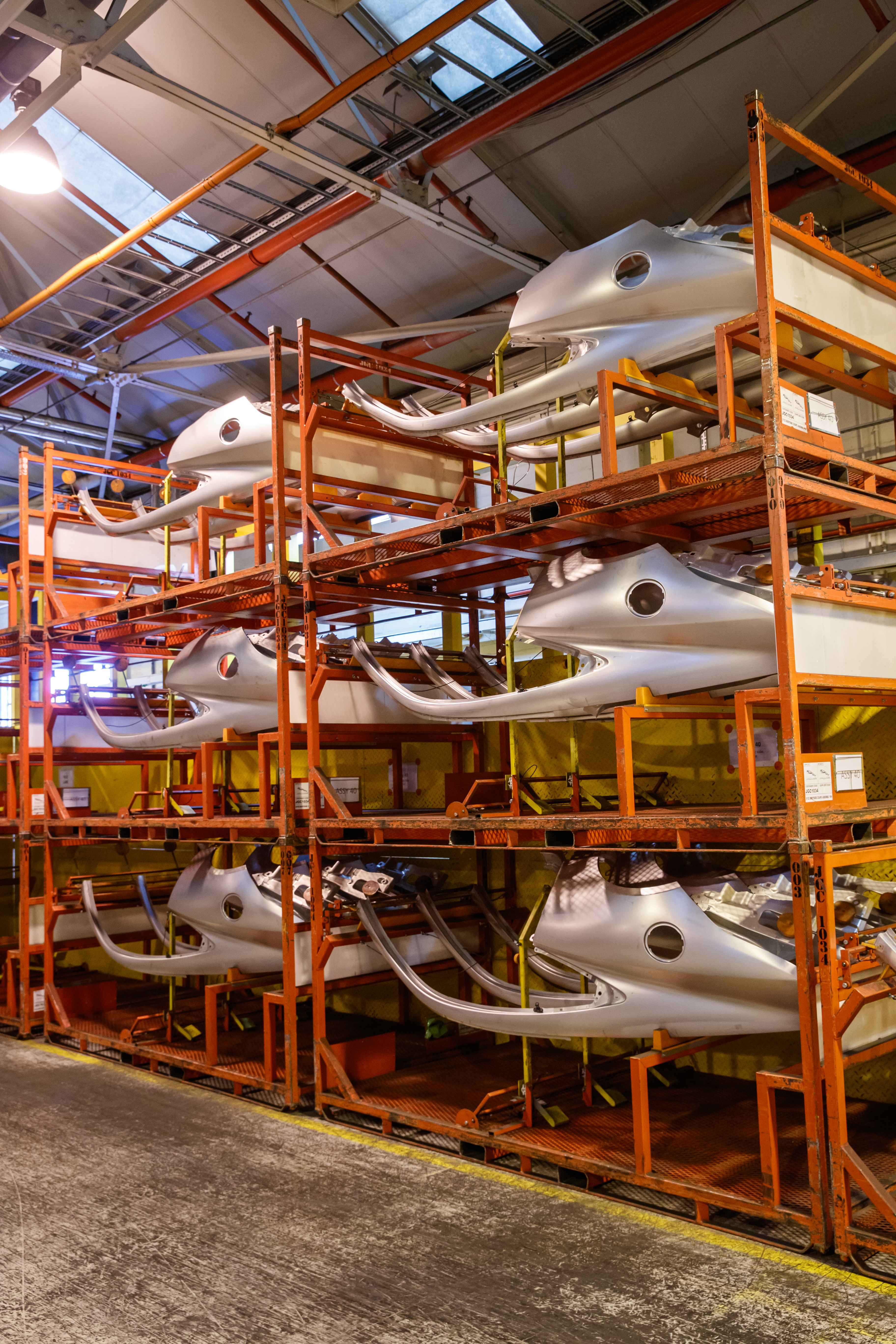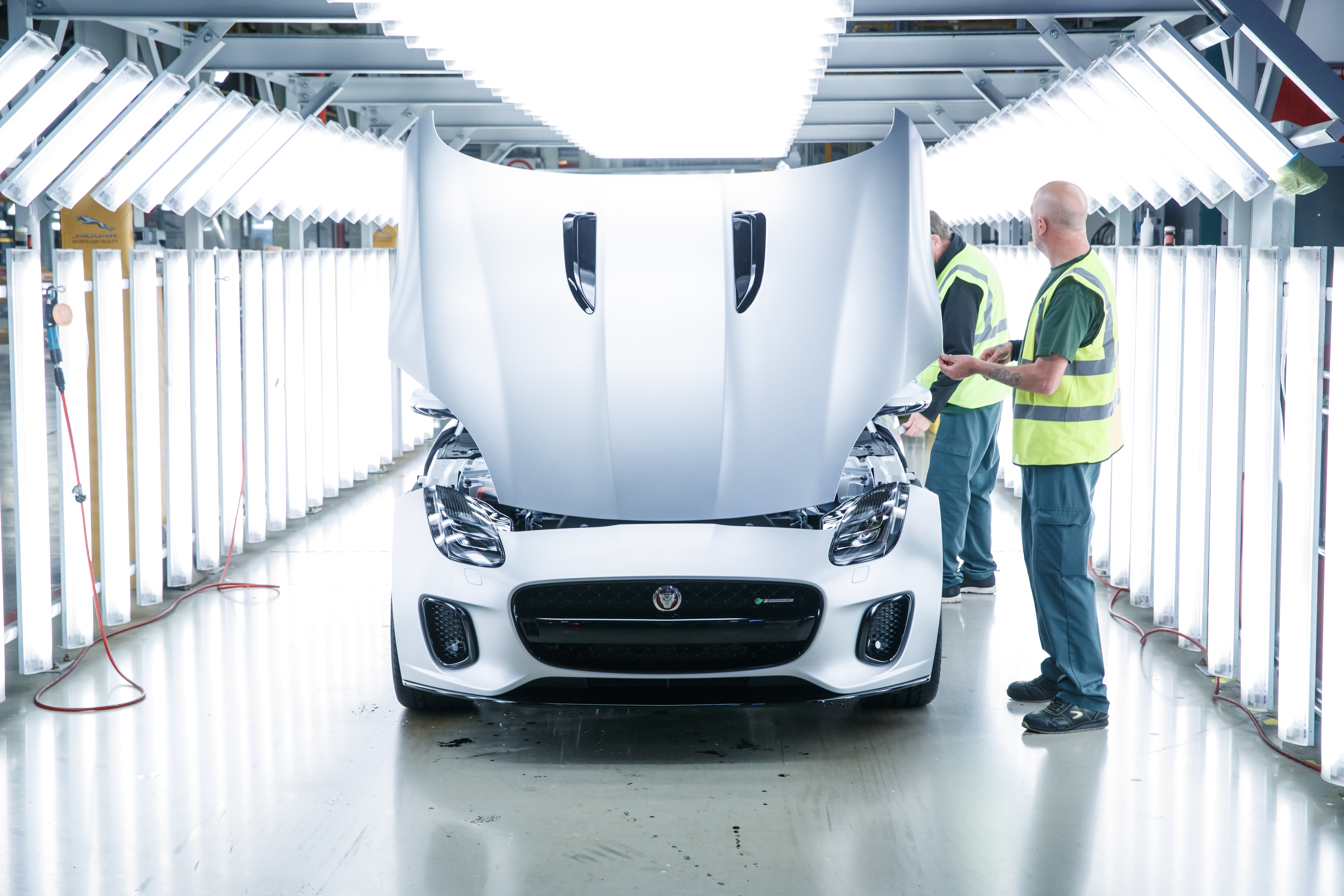From the vantage point of the Range Rover Sport SVR’s cockpit, life looks more than good— it is positively sunny. This is, afterall, an SUV that JLR proudly proclaims: “the fastest, most powerful and most dynamically focused Land Rover ever produced.” (Interesting that they went with “Land Rover” there— hardly seems necessary, but I suppose it’s meant to remind us that this is, ultimately, one big happy family of SUVs). This is a Range Rover though, so it’s no slouch in the comfort department, except that it boasts the least comfortable seats in the contemporary Land Rover line. Good thing the vibes in a flagship JLR product are so sunny, afterall, the marque’s homeland… isn’t.

Ah blighty, you make up for your weather and food with stately luxury cars and buildings with exceedingly cool names. Witness Castle Bromwich, JLR’s storied manufacturing facility, which sits on a 112-acre site, employing approximately 2,800 people across manufacturing, engineering and supporting functions. The site is one of three Jaguar Land Rover advanced vehicle manufacturing facilities in the UK. Castle Bromwich meets the demand for all Jaguar saloon models XF, XE and XJ as well as the F-TYPE sports car.
While not a castle, JLR’s Solihull plant is no slouch, as home to the Range Rover, Range Rover Sport, Discovery, Jaguar F-PACE and the World Design Car of the Year - the Range Rover Velar. The factory sits on a 300-acre site, employing approximately 9,000 people in manufacturing and is one of three Jaguar Land Rover’s advanced vehicle manufacturing facilities in the UK. Solihull is on three-shift, 24 hour production to meet the global demand for the company’s stellar products.

Ah, but where do these mighty beasts get there beating hearts from? Actually, Jaguar Land Rover juts expanded its Ingenium engine family with a new six-cylinder petrol engine designed and engineered in-house, and manufactured at its £1 billion Engine Manufacturing Centre in Wolverhampton, UK. See what I mean about the cool names?
The 3.0-litre straight six cylinder petrol engine, which will debut on the Range Rover Sport, is available in 360PS and 400PS versions with a torque capable of up to 495 and 550Nm, is more responsive and better balanced than the outgoing V6 petrol.
It features a unique combination of an electric supercharger to deliver immediate response supported by a twin scroll turbocharger and Continuous Variable Valve Lift, which boosts power and help the engine to breathe with maximum efficiency.
 These performance-boosting technologies, combined with Mild Hybrid Electric Vehicle (MHEV) technology, optimises performance, fuel economy and reduces emissions. The MHEV 48V.
These performance-boosting technologies, combined with Mild Hybrid Electric Vehicle (MHEV) technology, optimises performance, fuel economy and reduces emissions. The MHEV 48V.
system uses a small integrated electric motor to harvest energy lost during deceleration, and then intelligently redeploys it to assist the engine to maximise efficiency.
Nick Rogers, Executive Director of Product Engineering said: “From the outset we always intended Ingenium to be a full family. That is why we chose to engineer our own flexible engine architecture to meet our bespoke needs, allowing Jaguar Land Rover to adapt and stay ahead of changes in regulation and technology. This second wave of engines, with a Mild Hybrid 48V system and performance-boosting technologies, is engineered to be cleaner and more efficient than ever before.”
The new Ingenium engine has been designed and developed in-house and will be manufactured at Jaguar Land Rover’s £1 billion EMC in Wolverhampton, alongside the current four-cylinder petrol and diesel engines.

The 200,000 sqm site is a ‘zero waste to landfill’ facility with everything used being recovered and recycled. Jaguar Land Rover sources 100% renewable electricity for its UK facilities and over 21,000 photovoltaic panels are installed on the roof of the EMC plant, allowing it to generate up to 30% of the site’s energy.
The EMC is fitted with state-of-the-art equipment featuring precision manufacturing technology, including machinery that can work to tolerances of three microns (a human hair is 50 microns).
In addition to being committed to delivering clean diesel and petrol engines, Jaguar Land Rover is investing in electrification with next-generation Electric Drive Units (EDU) starting production at the EMC from 2020.
Jaguar Land Rover wants to enable customers to make an informed decision on the best Ingenium engine technology for how and where they drive, whether that is fully electric, hybrid, petrol or diesel.
The company’s latest diesel and petrol cars are amongst the cleanest in the world and meet the new regulated laboratory and real world tests (WLTP and RDE). They are EU6 compliant and can be driven anywhere, and are, for example, exempt from London’s Ultra-Low Emission Zone (ULEZ) daily charge, which applies from April 2019.




